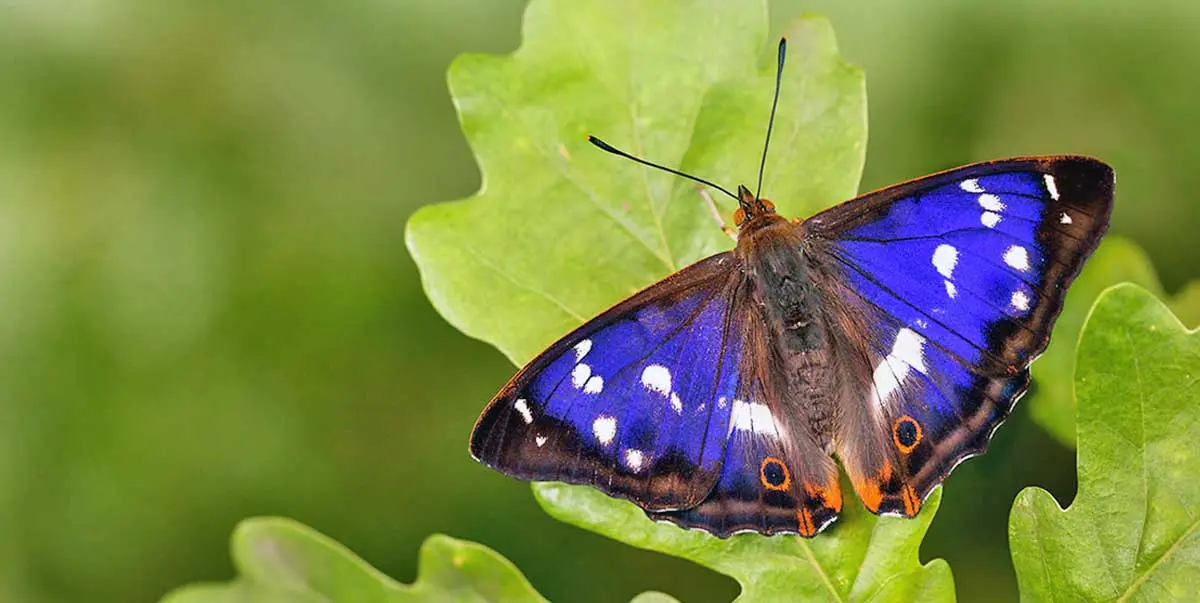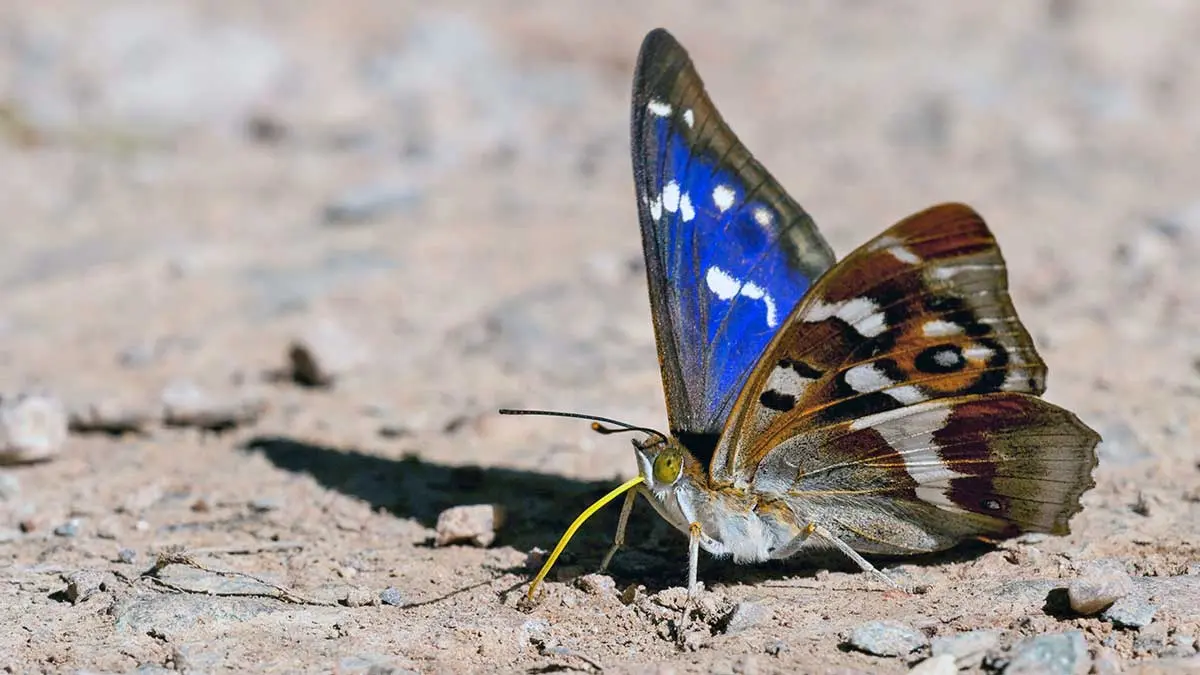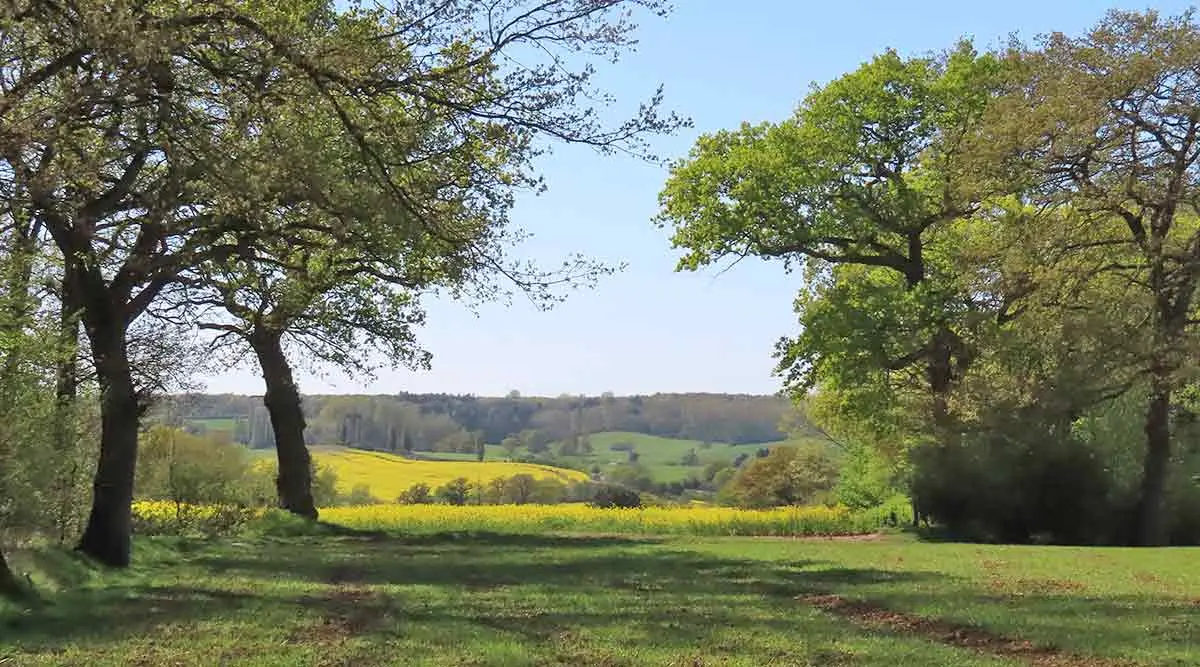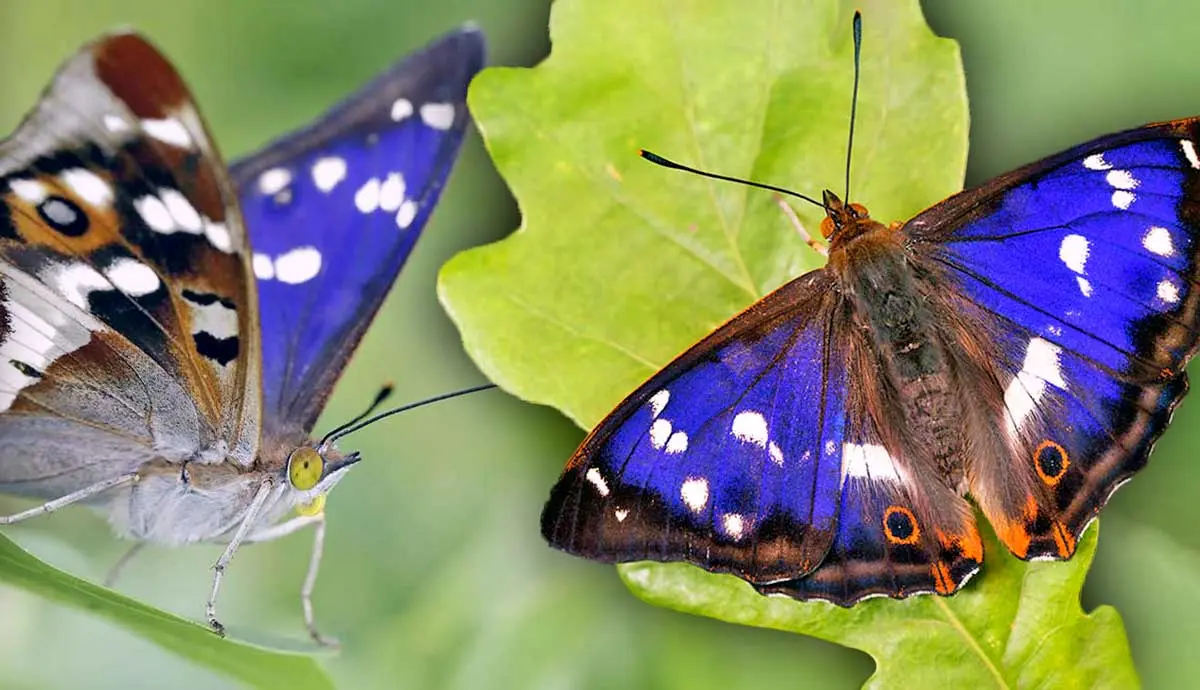We all associate butterflies with pretty summer days and open fields - creatures of pure innocence and beauty. Enter: the purple emperor butterfly, known for its nasty habit of feeding on carrion, dung, and even urine. Luckily for this carnivorous creature, its stunning purple wings make up for its questionable diet. Let’s take a deeper look at this interesting insect and get to know what makes it special.
An Enigmatic Beauty

At first glance, the emperor butterfly (scientifically known as Apatur iris) is nothing more than a rare beauty. It’s easily identifiable by its striking bright blue or deep purple wings that span for what seems like miles! These butterflies are often much larger than the more common insects you see in your garden, and their wings are velvety soft, too.
Male emperors have much brighter wings than their female counterparts, who sport a paler upperside and are a slightly larger bug as well. When looking closely at one of these creatures, you might even notice some tinges of green and orange on their wings, adding even more to their bright, beautiful sheen.
Even the chrysalis stage of these butterflies is unique - they’re incredible at camouflage and blend in perfectly with whatever leaf they’ve settled down on.
What Sets the Purple Emperor Apart

To get to the heart of the matter, emperor butterflies are different from the rest of their family due to their strange eating habits. Instead of the sweet nectar of nearby flowers, these bugs prefer the taste of rot.
Emperor butterflies sometimes feed on rotting fruit found on the forest floor but are more often found munching on animal dung and carrion for the salts and minerals they need to thrive. Thanks to this interesting meal choice, emperors have become known as the vultures of the insect kingdom since their diets are so similar to those of birds of prey who prefer to wait around for the leftovers of other animals.
Both vultures and purple emperors know what they like - and we can’t fault them for that, even if the thought of it turns us a little green!
Habitat and Behavior

Emperor butterflies are most commonly found in central and southern England but are known for being extremely elusive. They’re only found in small numbers in oak woodland areas.
Aside from partaking in their eating habits, male emperors will congregate and spend their days sunning their wings high up in the trees and waiting patiently for a female to mate with, typically in the month of July. After mating, eggs are laid on goat willow or grey willow leaves, and a new generation of emperors will be born!
When they’re fully grown butterflies, they’re exceptionally strong fliers, soaring high up. This makes them a tough critter to spot, and since they share the skies with birds, they’re known for being aggressive. This helps them when dealing with common predators like bats, frogs, and the birds they meet up in the skies.
Conservation and Challenges and Efforts

Unfortunately, there was a sharp decline in the number of purple emperors during the twentieth century, and they are now sadly restricted to a small and limited area in England. Despite this, there has been a slight but very fortunate re-expansion noted in some areas over recent years, which bodes well for the butterfly’s survival. At present, they’re considered not threatened, but they’re still a protected species due to the state of the English woodlands.
Rest assured, the Wildlife and Countryside Act of 1981 protects these creatures. It's important to consider the role of their habitat in their conservation, as this is where they’re facing their biggest threat. Continued loss of the English woodland would see these beautiful butterflies left without a place to call home, so protecting these environments is of utmost importance going forward. We need to remember that our natural world is what keeps our creatures alive, so preserving it is crucial.
Ecotourism and Butterfly Watching

Ecotourism, as the name suggests, refers to a type of tourism directed towards beautiful natural environments (and the critters that reside in them) and plays a major role in conservation, too.
Butterfly watching has become an increasingly popular form of ecotourism, and the purple emperor attracts quite a bit of attention. Butterfly enthusiasts will often travel to well-known hotspots in the English woodlands, particularly in July. Thanks to the butterfly’s exotic tastes, butterfly watchers will often bring along foul-smelling bait to lure them down and into view. Hopefully, a growing interest will encourage the planting of more trees in these areas to give the population a boost.

